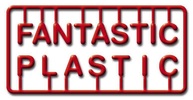Pan Am Space Clipper (Orion III)
from "2001: A Space Odyssey" (1968)
About the Design
The history of sci-fi spacecraft design can be broken cleanly into two categories: "Before 2001: A Space Odyssey" and "After 2001: A Space Odyssey." Before Stanley Kubrick's 1968 cinematic masterpiece, spacecraft -- even relatively complex ones like "Star Trek's" U.S.S. Enterprise -- tended to be more aesthetic than functional, and lacked significant surface features. That all changed with "2001." Not only were these spacecraft based on rigid scientific principles, but their surfaces virtually bristled with detail. Panel lines were distinct, panels were non-uniformly colored, and one could practically see every "rivet" holding the ships together. (This latter effect was achieved, in part, by detailing the filming miniatures with pieces "borrowed" from commercially available plastic model kits. 2001 was the first film for which this simple but effective technique was used.)
The first major spacecraft to appear in the film was the Orion III, aka the Pan Am Space Clipper. A commercial space plane whose lines would one day be echoed in the actual American Space Shuttle, the Orion III achieved orbit by means not revealed in the film, but presumably landed like a conventional aircraft. The vehicle had a limited seating area, suggesting that even in the "future" of the year of 2001, commercial space travel would be the province of only the very rich. |
About the Kit
Somewhat inaccurate -- but still far closer to the filming miniature than Airfix's later Orion III model -- this Aurora kit hit store shelves in mid-1968 shortly following "2001"'s Easter release and featured a removable rear section that exposed the "atomic" engine that purportedly powered the vehicle. (Such an engine was not suggested by the film.) The kit was re-released with new box art in 1975 just prior to Aurora's demise and has not been readily available since.
This model is an original 1968 edition, refurbished. |



